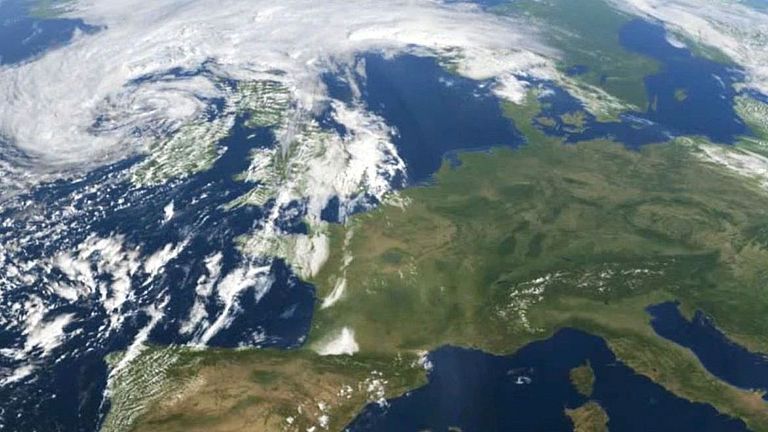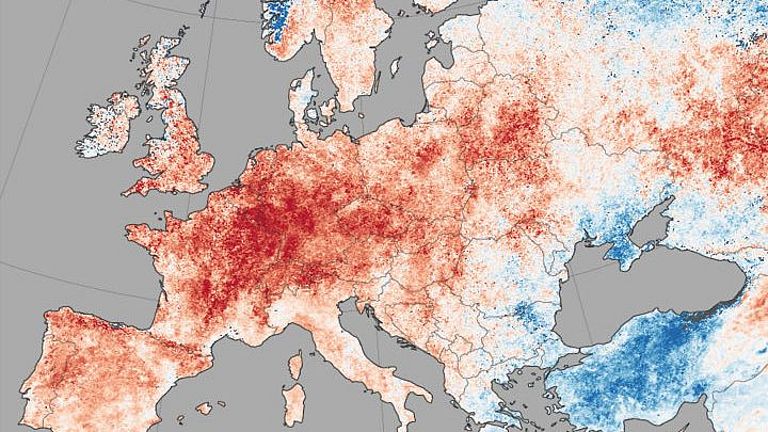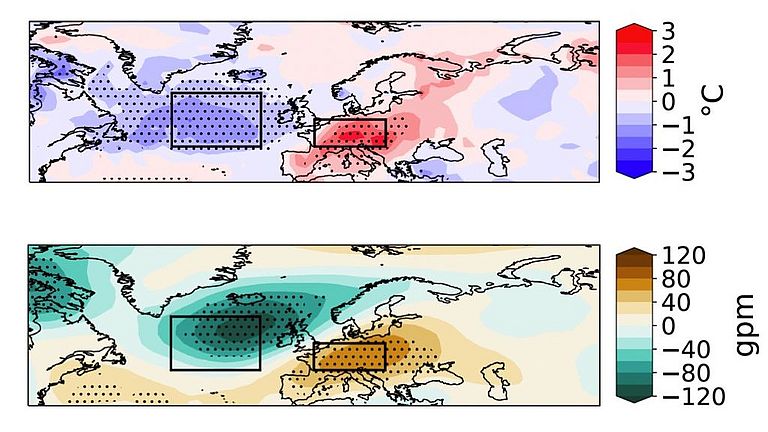Key to predicting heat events in Central Europe
GEOMAR study on atmospheric patterns and sea surface temperatures
The surface temperature of the North Atlantic plays an important role in the occurrence of heat waves in Europe. However, researchers at the GEOMAR Helmholtz Centre for Ocean Research in Kiel have shown that it is not high water temperatures, but low water temperatures that are responsible for heat events on land. For their study, they used a combination of observations and weather models to investigate the relationship between North Atlantic sea surface temperatures (SST) and heat events in Europe over the period 1979 to 2019. They have now published their results in the journal Tellus A: Dynamic Meteorology and Oceanography.
The researchers found twelve events in which an unusually cold North Atlantic surface temperature was followed by a maximum land temperature in Europe. Additionally, there were 17 European heat events preceded by a drop in sea surface temperatures. In addition to the contrast between cool water and hot land temperatures, the interaction between a North Atlantic low-pressure system and a European high-pressure system was another striking feature. Climate physicist Julian Krüger, PhD student in the Climate Extremes research group of the Marine Meteorology research unit at GEOMAR and lead author of the study, says: “We can see this connection particularly well in the summers of 2015 and 2018, when the North Atlantic was unusually cold and at the same time heat events occurred over Europe.”
The researchers analysed several meteorological factors to understand the relationship between North Atlantic temperatures and European heat events. They found that during these events, the subpolar North Atlantic experiences an increased flow of heat from the ocean into the atmosphere, as well as rising air masses and precipitation. The released heat is transported towards Europe, contributing to the formation of an area of high pressure. This in turn favours clear skies with strong solar radiation, which is decisive for the maximum surface temperature in Europe.
Krüger: “The results of the study contribute to the understanding of the statistical and physical relationship between the North Atlantic surface temperature and European heat events, which is also crucial for better predictability of heat events in a changing future climate.”
Publication:
Krüger, J., Kjellsson, J., Kedzierski, R.P. and Claus, M., 2023. Connecting North Atlantic SST Variability to European Heat Events over the Past Decades. Tellus A: Dynamic Meteorology and Oceanography, 75(1), p.358–374.
https://doi.org/10.16993/tellusa.3235
Funding:
J.Krüger was supported by JPI Climate & JPI Oceans (ROADMAP, grant 01LP2002C).

The satellite image shows an example of low cloud cover during a heat wave and the anticyclonic conditions over Europe. Photo: University of Bremen/IUP.

A particularly hot summer: The photo shows land temperatures between 30 June and 9 July 2015. Photo: NASA Earth Observatory

Contrast of surface temperature anomalies (top) associated with the interaction of a North Atlantic depression and a European anticyclone (bottom) during cold sea surface temperature events with a negative trend in the North Atlantic. Figure: Krüger et al. 2023


